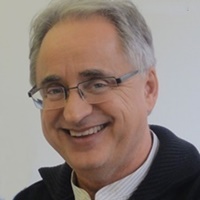Imbalance-P places nutrient imbalance on the world agenda
The world is leading towards more accurate climate modelling, more equitable policymaking, and more sustainable food production thanks to the Imbalance-P project, with Josep Peñuelas, Michael Obersteiner, Ivan Janssens and Philippe Ciais.
The interdisciplinary European Research Council (ERC) Synergy project brought together four leading researchers specialising in ecosystem diversity, biogeochemistry, Earth modelling and resource economics: CREAF and CSIC researcher Josep Peñuelas, Ivan Janssens from University of Antwerpen; Philippe Ciais from Laboratoire des Sciences du Climat et de l'Environnement , and Michael Obersteiner from the International Institute for Applied Systems Analysis.
Thanks to Imbalance-P, the issue of nutrient imbalance is now firmly on the global agenda and its results are already influencing the global scientific and policy community. The fruits of an intense, synergistic collaboration among the four highlighted scientists are the impressive results: more than 500 papers have been published, most of them in top-tier journals such as Science and Nature.
The project addresses the impact on climate change, biodiversity, food security and even on the geopolitics of the imbalance between the availability of phosphorus, carbon and nitrogen in the world.
In their work, the four scientists focus on the impact on climate change, biodiversity, food security and even geopolitics caused by the imbalance in the availability of phosphorus, carbon and nitrogen. Among these elements essential for life, the availability of carbon and nitrogen is increasing rapidly in most parts of the world, but the availability of phosphorus is not, and is therefore a finite resource.
Halting biodiversity loss
One of the results with the greatest impact of the Imbalance-P project is that it has demonstrated viable pathways towards curbing biodiversity loss. For this purpose, data on on nutrient cycling have been included, as it relates to ecosystem functioning in 9 biodiversity models. “The inclusion of the nutrient dimension in climate modelling is especially important for countries with a lot of vegetation, like Russia or Brazil”, according to Michael Obersteiner, “and we have demonstrated that this is feasible to do”. Earth system models have also been improved and developed in more detail than ever before, parameterising the components of the three nutrient cycles, based on data from different ecosystems in Europe, America, Greenland, Africa and Asia.
The new developed Earth System Models now allow in-depth assessments of optimized biophysical production possibilitislaes to feed an ever increasing and more demanding global human society. Moreover, these models make it possible to compute thousands of new global scenarios of the Earth system looking at different global management strategies, which will potentially inform the development of a new set of science-based Earth system targets.

“This Synergy grant enabled us to learn a lot from each other. This is how breakthrough science is achieved”
JOSEP PEÑUELAS, researcher at CREAF and at CSIC.
Over the last two years the four of them combined their expertise and awoken the scientific community to what nutrient imbalances could mean for our planet, and for our species. “This Synergy grant enabled us to learn a lot from each other. This is how breakthrough science is achieved”, says Josep Peñuelas.
Peñuelas, Ciais, Janssens and Obersteiner have comprehensively closed the phosphorus cycle and generated new integrated knowledge of the impacts of carbon, nitrogen and phosphorus imbalances on the diversity and function of natural ecosystems, climate, agriculture and society. The responses of life, society and the Earth system are closely interconnected, but have so far been largely considered in fragmented monodisciplinary research.






